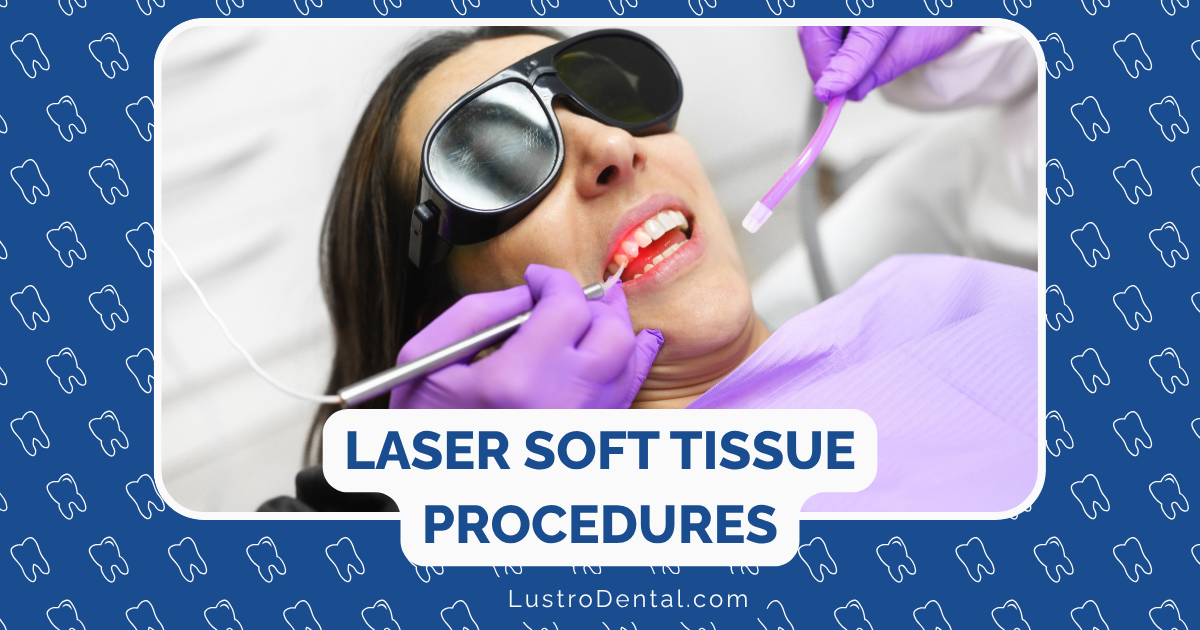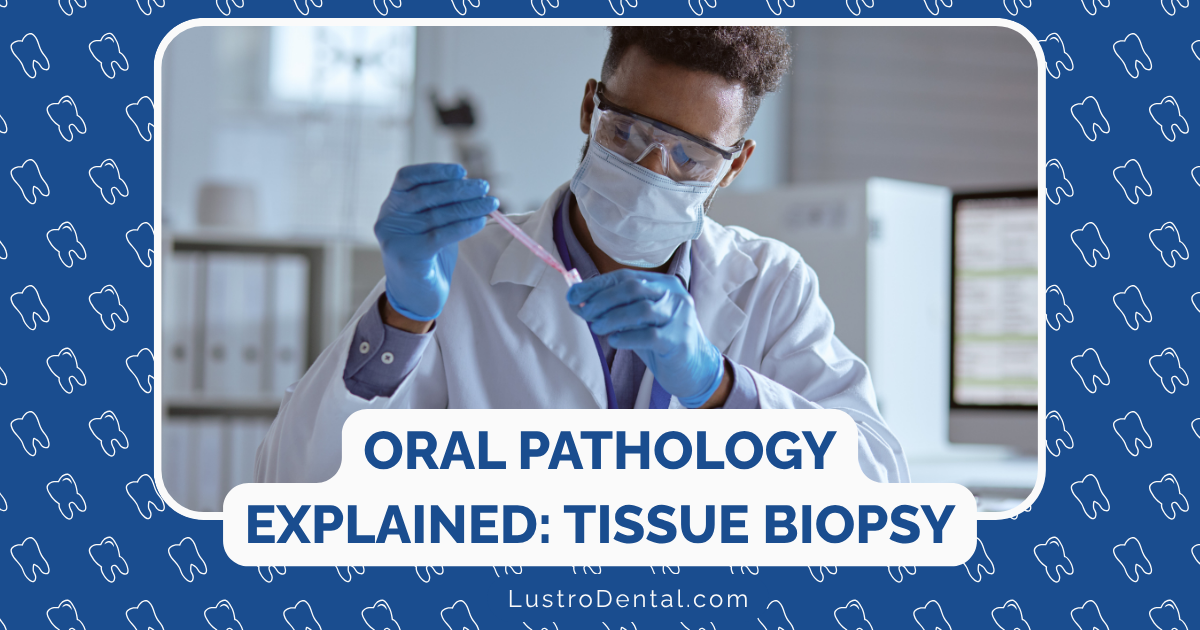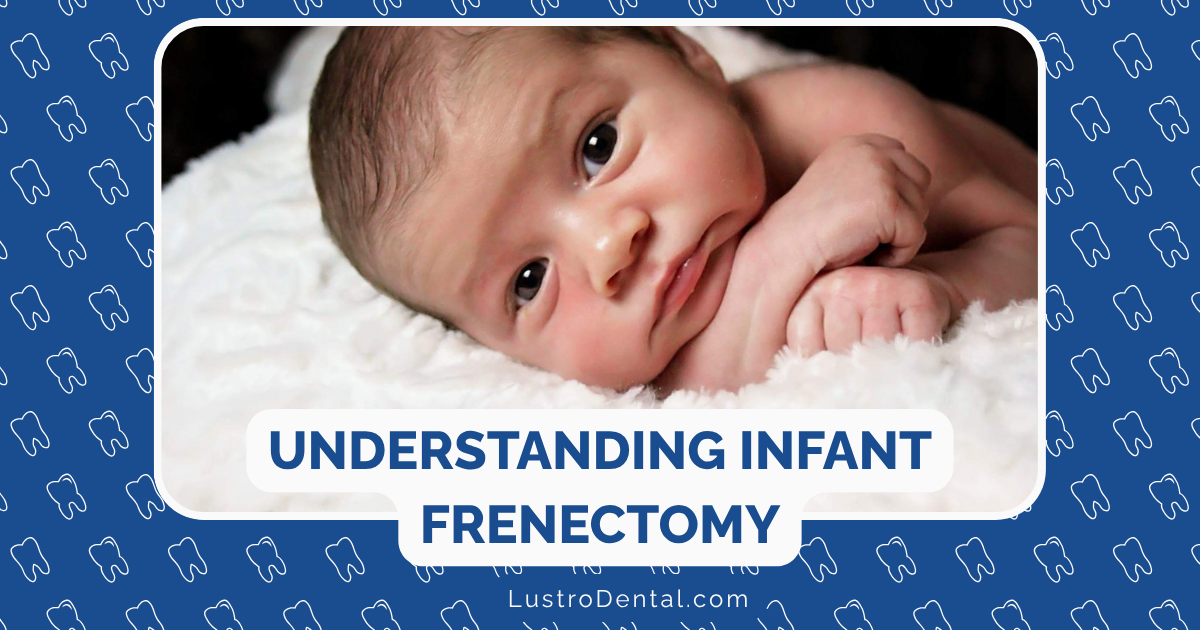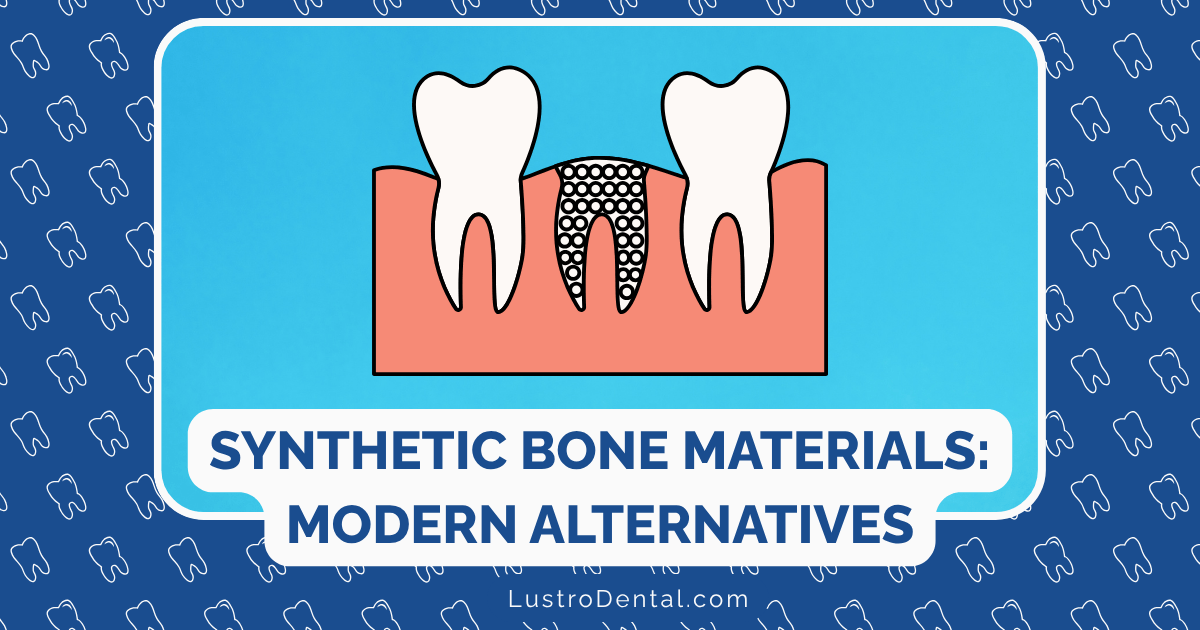PRF and PRP in Oral Surgery: Using Your Body’s Own Healing Factors
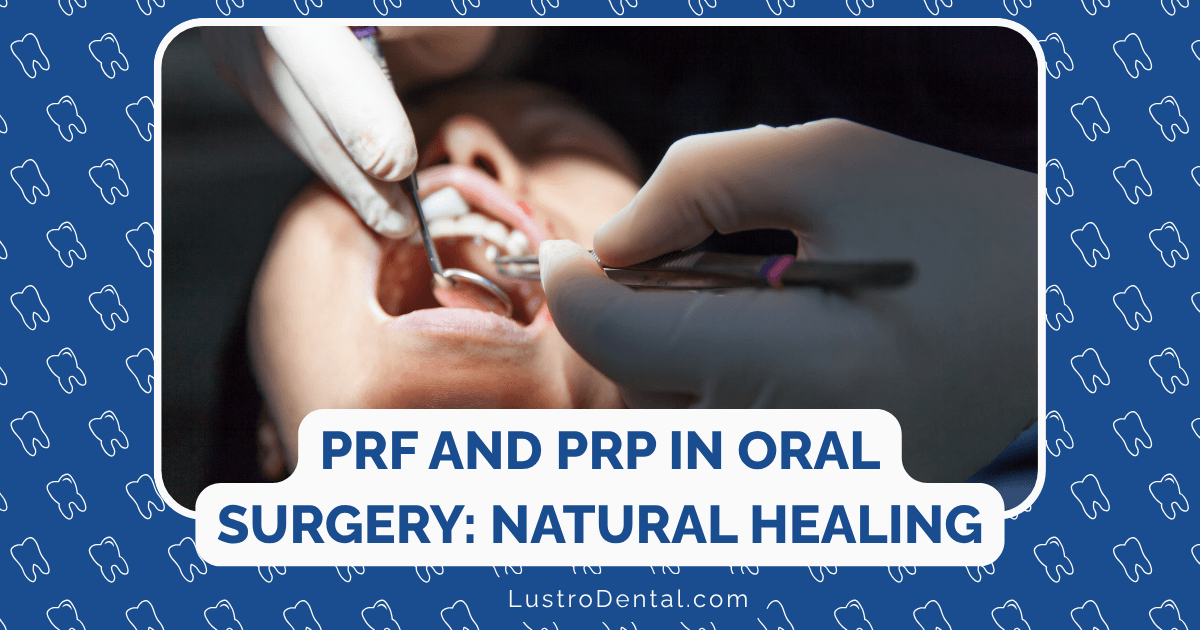
When Lisa came in for her dental implant consultation, she was concerned about the healing process. She’d heard stories about lengthy recovery times and potential complications. “Is there anything that can help me heal faster?” she asked. This question is one I hear frequently in my practice, and fortunately, modern dentistry offers some remarkable solutions.
Enter PRF and PRP—revolutionary approaches that harness your body’s own healing mechanisms to accelerate recovery and improve outcomes after oral surgery. These techniques have transformed how we approach procedures ranging from wisdom tooth extractions to complex bone grafting.
In this article, we’ll explore how these natural healing enhancers work, their benefits, and what you can expect if your dentist recommends them for your procedure.
What Are PRF and PRP? Understanding the Basics
PRF (Platelet-Rich Fibrin) and PRP (Platelet-Rich Plasma) are both concentrated blood products derived from your own blood. Though similar, they have distinct properties and applications.
Platelet-Rich Plasma (PRP)
PRP is a concentration of platelets in plasma obtained by drawing a small amount of your blood and processing it in a centrifuge. This process separates the blood components, allowing us to isolate and concentrate the platelets—cell fragments that play a crucial role in clotting and healing.
What makes PRP special is its rich concentration of growth factors—natural proteins that:
- Stimulate cell proliferation
- Promote tissue regeneration
- Enhance bone formation
- Accelerate soft tissue healing
- Reduce inflammation
According to research published in the Journal of Oral and Maxillofacial Surgery, PRP contains 3-5 times the normal concentration of platelets found in whole blood, creating a powerful healing cocktail.
Platelet-Rich Fibrin (PRF)
PRF represents the next generation of platelet concentrates. Unlike PRP, PRF doesn’t use anticoagulants or additives. Your blood is centrifuged at a lower speed, creating a fibrin matrix rich in platelets, leukocytes (white blood cells), and growth factors.
The key differences that make PRF unique:
- Contains a natural fibrin framework that acts as a scaffold for healing
- Releases growth factors more gradually over time (7-10 days vs. 1-2 days for PRP)
- Includes white blood cells that help fight infection
- Forms a gel-like membrane that can be placed directly in surgical sites
Dr. Sarah Johnson, a researcher at the National Institute of Dental and Craniofacial Research, explains: “PRF’s sustained release of growth factors mimics the natural healing process more closely than earlier technologies. The fibrin matrix provides both structural support and a delivery system for these healing factors.”
The Science Behind the Healing: How Growth Factors Work
To understand why PRF and PRP are so effective, we need to look at the key growth factors they contain and how these proteins accelerate healing:
Platelet-Derived Growth Factor (PDGF)
- Stimulates cell replication
- Promotes angiogenesis (new blood vessel formation)
- Attracts stem cells to the wound site
Transforming Growth Factor-Beta (TGF-β)
- Promotes formation of extracellular matrix
- Regulates cell proliferation
- Supports bone formation
Vascular Endothelial Growth Factor (VEGF)
- Stimulates new blood vessel formation
- Improves blood supply to healing tissues
- Enhances oxygen delivery to the wound
Insulin-Like Growth Factor (IGF)
- Regulates cell growth
- Promotes tissue healing
- Supports bone matrix formation
Epidermal Growth Factor (EGF)
- Stimulates epithelial cell proliferation
- Accelerates wound closure
- Enhances cell migration during healing
A study published in the International Journal of Oral and Maxillofacial Surgery found that these growth factors work synergistically, creating a healing response greater than any single factor could produce alone.
The Procedure: From Blood Draw to Application
Many patients are curious about what the PRF or PRP process involves. Here’s what you can expect if your dentist recommends these treatments:
1. Blood Collection
The process begins with a simple blood draw, similar to a routine blood test. Typically, only 10-60ml of blood is needed (about 1-4 tablespoons), depending on the extent of your procedure.
2. Centrifugation
Your blood is placed in a specialized centrifuge, which spins the blood at precise speeds to separate its components.
- For PRP: The blood is typically processed in two centrifugation steps with anticoagulants added
- For PRF: A single spin at lower speed without additives creates the fibrin clot
3. Preparation
- PRP is extracted in liquid form and may be activated with calcium chloride or thrombin just before application
- PRF forms a gel-like material that can be used as is or compressed into a membrane
4. Application
Depending on your procedure, the PRF or PRP is applied in different ways:
- Mixed with bone graft material to enhance bone regeneration
- Placed directly in extraction sockets to accelerate healing
- Applied as a membrane over surgical sites
- Injected into tissues to promote soft tissue healing
The entire process takes place during your surgical appointment, adding only about 10-15 minutes to your procedure time.
Clinical Applications: When Are PRF and PRP Most Beneficial?
These regenerative techniques have proven particularly valuable in several dental and oral surgery procedures:
Tooth Extractions
When a tooth is removed, PRF can be placed in the socket to:
- Reduce the risk of dry socket by 70-90% according to studies in the Journal of Dental Research
- Accelerate soft tissue closure
- Preserve bone height and width
- Minimize post-operative pain
Dental Implants
PRF and PRP can significantly enhance implant success by:
- Improving osseointegration (the fusion of implant to bone)
- Accelerating healing around the implant
- Reducing healing time before the implant can be loaded
- Enhancing soft tissue aesthetics around the implant
Bone Grafting Procedures
When rebuilding bone for implant placement or other purposes:
- PRP/PRF mixed with graft material improves handling properties
- Growth factors enhance the incorporation of the graft material
- Studies show up to 50% faster bone maturation with these techniques
- Improved density and quality of regenerated bone
Sinus Lift Procedures
When bone is added to the sinus floor for upper jaw implants:
- PRF membranes can help repair tears in the sinus membrane
- Reduces risk of graft migration into the sinus
- Accelerates bone formation in this challenging area
Periodontal Surgery
For procedures addressing gum disease and its effects:
- Enhances tissue regeneration in periodontal pockets
- Improves healing of gum grafts
- Reduces post-operative discomfort
- Accelerates attachment of gums to tooth surfaces
Dr. Robert Chen of the American Academy of Periodontology notes: “The applications of PRF and PRP continue to expand as we gather more clinical evidence. We’re seeing particular benefits in complex cases where healing might otherwise be compromised.”
PRF vs. PRP: Which Is Better?
While both PRP and PRF offer significant benefits, research is increasingly pointing to some advantages of PRF for many dental applications:
Advantages of PRF Over PRP
- Simpler preparation protocol (single centrifugation)
- No chemical additives required
- Slower, more sustained release of growth factors
- Better structural properties for certain applications
- Includes leukocytes that help prevent infection
A comparative study published in the Journal of Oral Implantology found that PRF showed superior results for soft tissue healing and bone regeneration after third molar extractions compared to PRP.
However, PRP still has valuable applications, particularly when a liquid form is needed for injection or mixing with certain graft materials.
Real Results: What the Research Shows
The evidence supporting PRF and PRP use in oral surgery is substantial and growing:
Extraction Healing
A randomized controlled trial published in the Journal of Oral and Maxillofacial Surgery found that extraction sites treated with PRF showed:
- 40% faster soft tissue closure
- 25% better preservation of ridge width
- Significantly less pain on days 1-3 post-extraction
- 85% reduction in dry socket incidence
Implant Success
Research in the International Journal of Implant Dentistry demonstrated:
- Improved early stability measurements for implants placed with PRF
- Reduced healing time before prosthetic loading
- Better soft tissue contours around implants
- Improved outcomes in challenging cases with thin bone
Bone Regeneration
Multiple studies have shown:
- 30-45% increase in bone density when PRF is added to graft materials
- More predictable results in vertical ridge augmentation
- Better graft incorporation and less resorption
- Accelerated healing timeframes
Lisa’s Experience: A Patient’s Perspective
Returning to Lisa from our introduction, she opted to have PRF used during her implant placement and bone grafting procedure. Here’s what she reported:
“I was nervous about having an implant, especially after hearing about long recovery times from friends. But my experience with PRF was remarkably different. The swelling was minimal—just two days of noticeable puffiness compared to the week my friend experienced. I only needed pain medication for the first day, and by day three, I felt almost normal.
When I returned for my follow-up, my dentist was impressed with how quickly the tissue had healed. Six months later, when it was time to place the crown, the imaging showed excellent bone formation around my implant. The entire process was so much smoother than I expected.”
Lisa’s experience aligns with what clinical studies have shown—PRF can significantly improve the patient experience during recovery while enhancing long-term outcomes.
Is PRF or PRP Right for You?
While the benefits are clear, these techniques aren’t automatically used in every case. Several factors determine whether PRF or PRP would be beneficial for your specific situation:
Ideal Candidates Include:
- Patients undergoing complex extractions or multiple extractions
- Those receiving dental implants, particularly in challenging sites
- Individuals with factors that might compromise healing (controlled diabetes, history of smoking)
- Cases requiring bone grafting or sinus lifts
- Patients with concerns about recovery time or complications
Considerations That Might Limit Use:
- Certain blood disorders or clotting issues
- Very low platelet counts
- Current anticoagulant therapy that cannot be temporarily discontinued
- Active infection at the surgical site
Dr. James Wilson of Mayo Clinic advises: “A thorough medical history is essential before recommending PRF or PRP. While these techniques are appropriate for most patients, individualized assessment ensures the best approach for each case.”
Conclusion: The Future of Healing Is Already Here
PRF and PRP represent a significant advancement in how we approach healing after oral surgery. By harnessing and concentrating the body’s own regenerative mechanisms, we can create more predictable results and improve the patient experience.
As Dr. Rodriguez of the American Academy of Implant Dentistry states: “These techniques bridge the gap between conventional surgery and true regenerative medicine. They allow us to not just repair tissues but to actively enhance and accelerate the healing process.”
If you’re facing an upcoming oral surgery procedure, ask your dental professional whether PRF or PRP might be appropriate for your case. The investment in enhanced healing could make a significant difference in your recovery experience and long-term outcome.
Have you experienced a procedure with PRF or PRP? We’d love to hear about your experience in the comments below.


